- Blog
- How to Respond to Bad Reviews for Your Car Business?
How to Respond to Bad Reviews for Your Car Business?
Negative reviews on Google happen even to the best of dealerships! You’ll learn how to handle them effectively with real examples of great responses.

When browsing your dealership’s Google reviews, you’ll likely see a lot of positive feedback from happy customers. But, in most used car dealerships, there’s always that one negative review that’s such an eyesore.
We’ll show you that you don’t have to fear negative reviews; they can actually help you boost your dealership’s credibility.
In this article, we’ll show you how to turn a negative review into a chance to build trust and improve your business. Using practical strategies and real-life examples, you’ll learn how to respond effectively and present your dealership in a positive light.
Reputation management in a dealership
First of all, let’s clarify why managing your reviews matters, and how it impacts your dealership’s reputation.
Reviews are a reflection of your online reputation, showing the world how customers see your dealership.
Positive reviews can attract new customers to your dealership, while negative ones, if not managed well, can turn potential buyers away.
In fact, the 2023 Automotive Industry by Reputation reveals that as much as 84% of customers say that online reviews are important in their choice of dealerships.
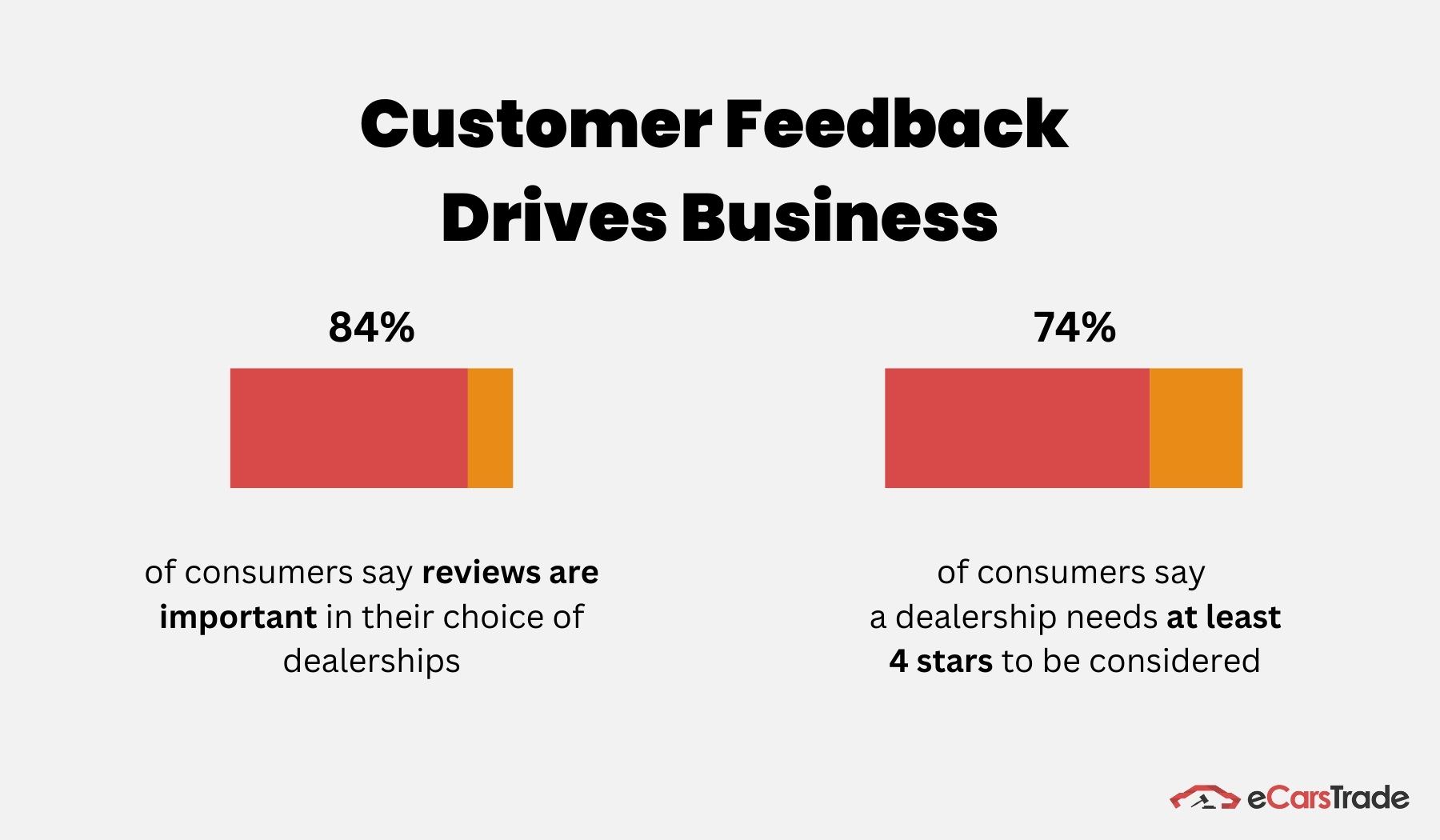
Data source: Reputation
In other words, you could say that there’s no business without reviews.
Also, bear in mind that managing your reputation is an ongoing process that requires attention and care.
If you’re aiming to build lasting relationships with your dealership’s customers, then responding to their feedback is crucial. This includes negative feedback, too!
So, it’s not all about collecting positive reviews. Negative dealership reviews are just as important, especially since only 12% of people would use businesses that don’t respond to negative reviews as well.
By replying to negative reviews, you show that you care and are willing to make things right. This builds trust with both the reviewer and future customers.
How to handle bad reviews?
Now that you’ve seen why you shouldn’t let bad reviews stand there unanswered, let’s see how to best address them.
Stay calm - Don’t be impulsive
When seeing a negative review, a dealer’s first instinct may be to hit the keyboard. However, it’s better to take a step back and reply with a cool head.
If you want to see how it’s done, take a look at the example below. The dealer could have written “It’s your fault for not reserving the car earlier, nothing to do with us!”
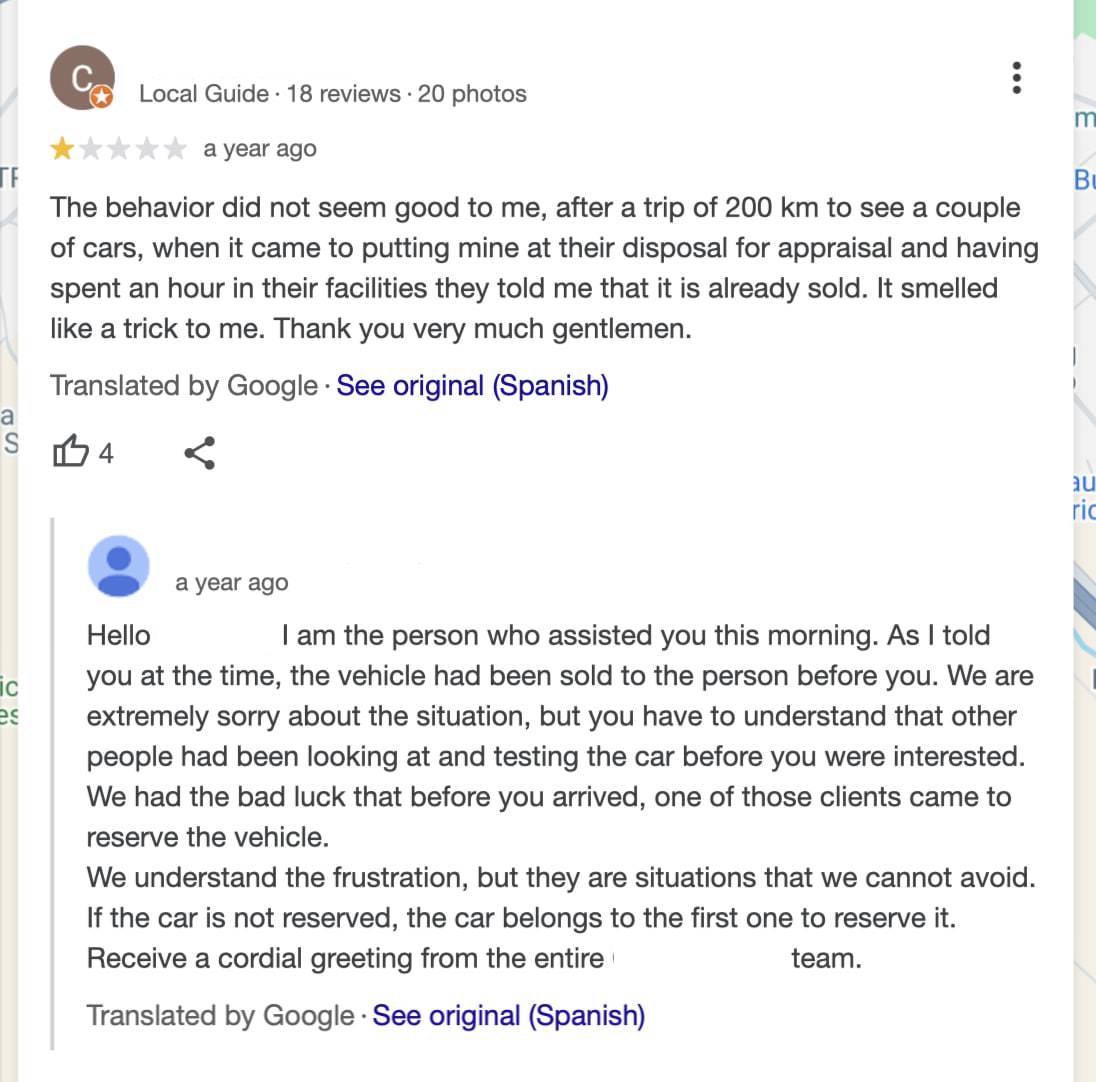
Image source: Google Reviews
Instead, they took time to explain the situation again.
The dealership didn’t dismiss the customer’s complaint; they addressed it with a calm, professional, and personalized reply.
Invite them to resolve issues privately
Sometimes, the situation the customer is complaining about is not straightforward, or not all facts are listed in the review.
In such cases, it’s best to avoid public arguing and invite the customer to reach out privately.
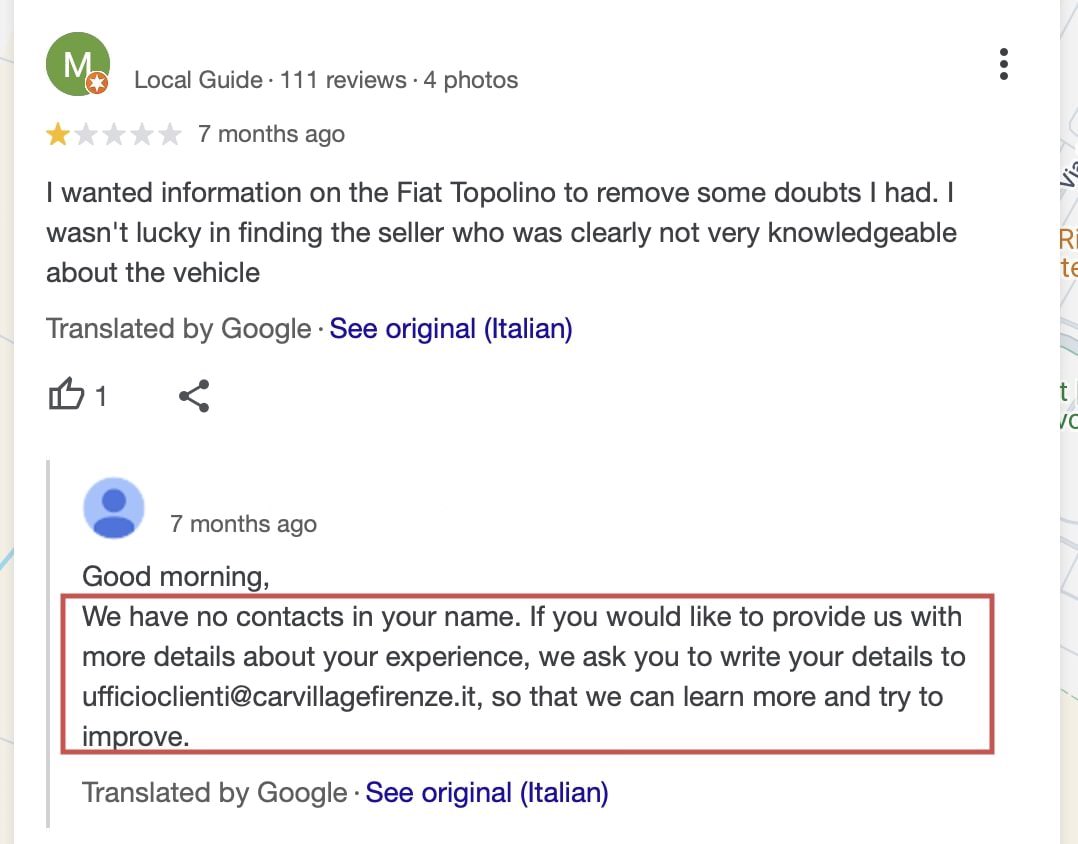
Image source: Google Reviews
That way, you’ll better understand their concerns and work toward a solution, and the other people reading the reviews will see that you’re committed to resolving issues in a professional manner.
Don’t take weeks to respond
Timing matters as much as the content of your response. Waiting too long to respond can give the impression that you don’t care about your customers’ concerns.
Also, the longer you wait to respond, the higher the chance that customers will lose patience and take their business elsewhere.
So, you should make review management a regular part of your customer satisfaction routine.
Acknowledge the customer’s concerns
It’s not that uncommon for frustrated customers to leave reviews blaming the dealers, even when dealers haven’t done anything wrong.
For instance, the customer below is fuming at a French used car dealership because of a breakdown.
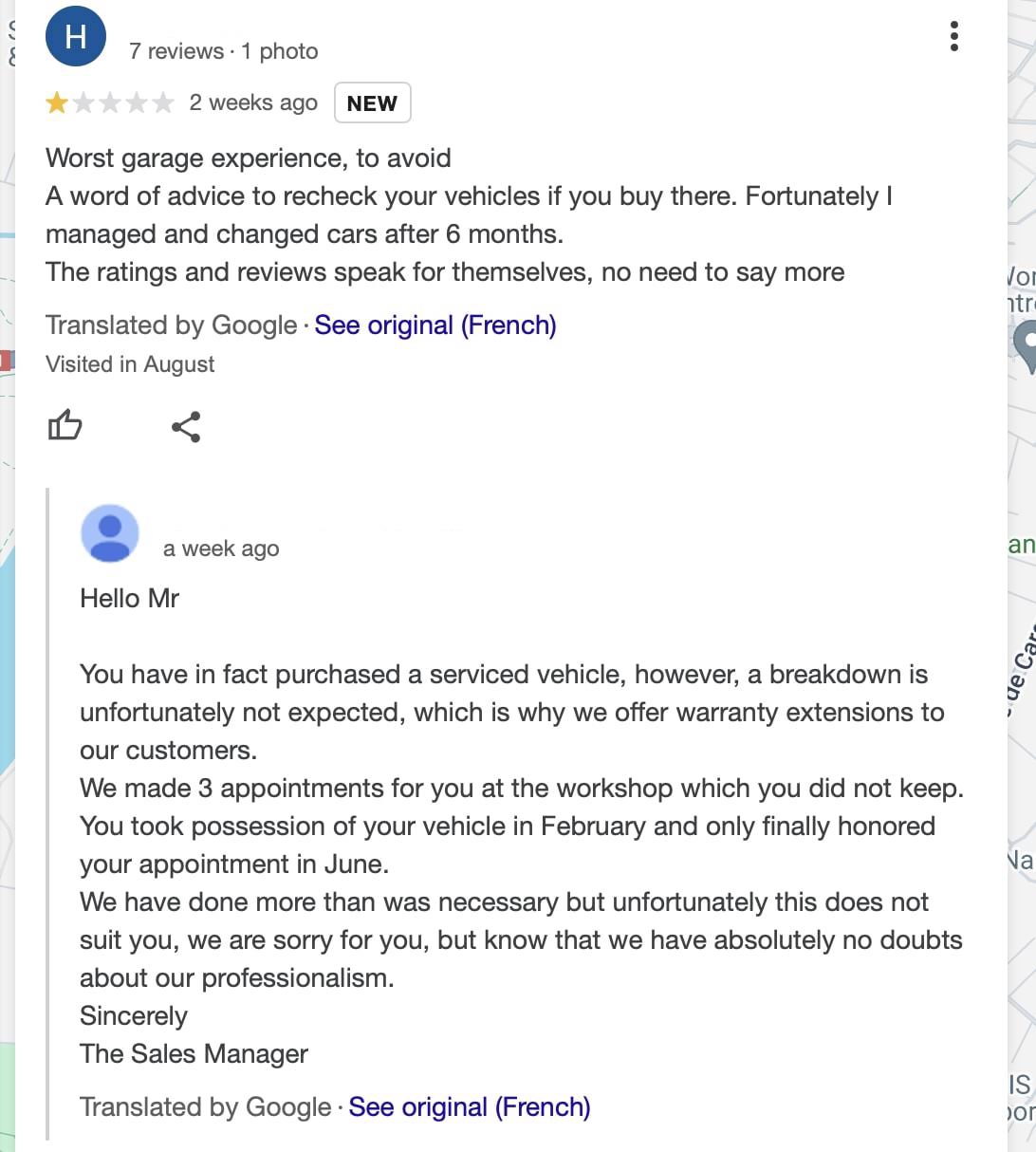
Image source: Google Reviews
While it’s not clear whose fault the breakdown is, the dealership still responded by acknowledging the customer’s frustration and providing an explanation.
The response wasn’t a generic one—they provided specific information about the case, letting the readers know that the dealership has already tried to solve the problem.
So, if you end up with a similar review, you should avoid blame-shifting, acknowledge the situation, and show your willingness to resolve the issue.
How to respond to a 1-star review - examples
There’s an interesting trend you may have noticed when browsing dealership reviews. Most 2, 3, and 4-star reviews don’t include comments—people usually describe their experiences only when they’re extremely satisfied or extremely dissatisfied.
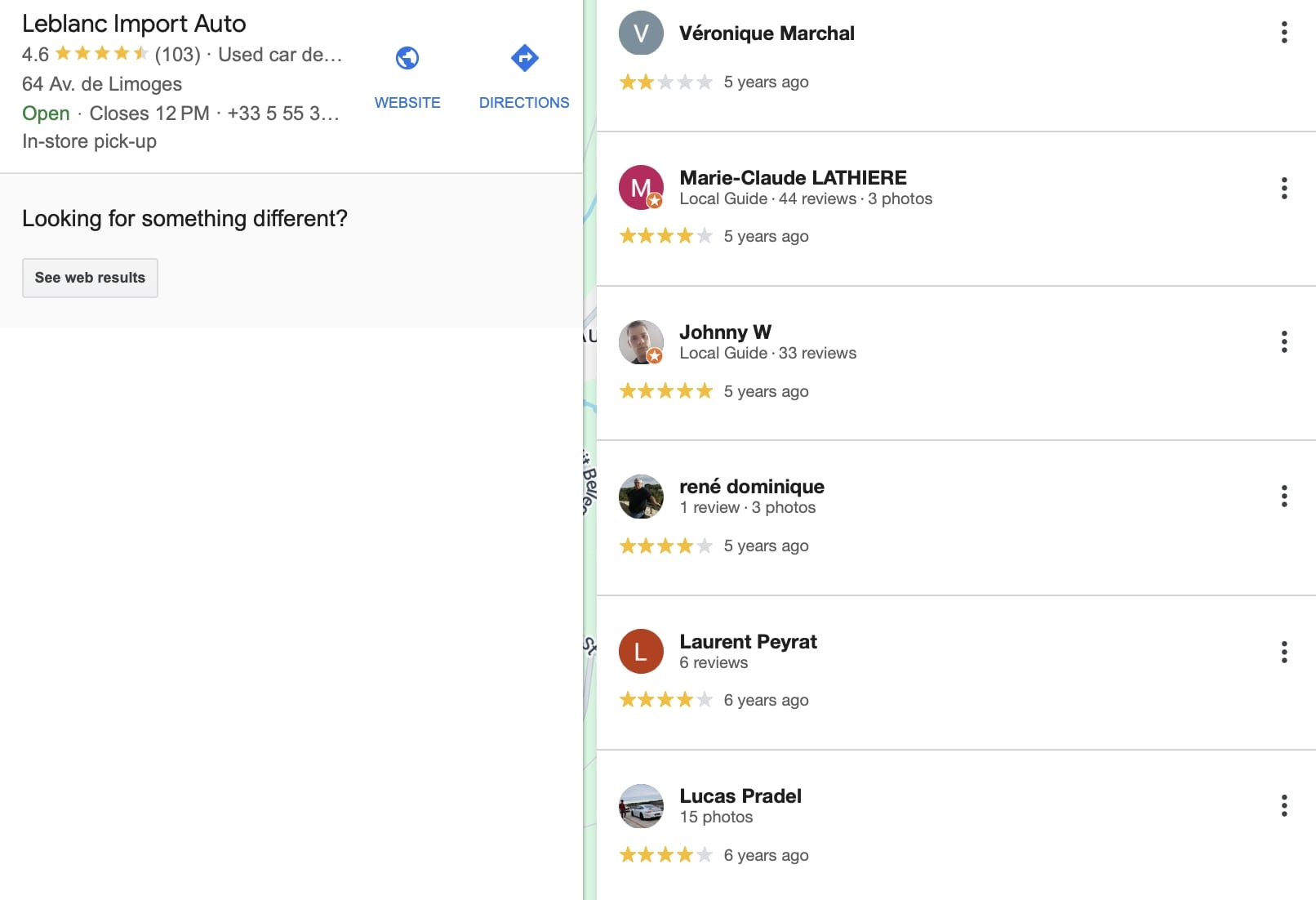
So, people will rarely write comments like “The car is alright, but the wait time for paperwork could be better”. Instead, they’ll simply click three or four stars and move on.
However, those who are really unhappy are more likely to leave detailed 1-star reviews, venting their frustrations. These reviews can be tough to read, but they also give your dealership a chance to show how you handle criticism and fix issues.
Would you believe a business with a perfect 5.0 rating? A few negative reviews can actually make your dealership seem more authentic and trustworthy.
So, let’s see how you can take the strategies you’ve seen and apply them all to turn a 1-star review into an opportunity to win back trust.
The review below is a perfect example of the anatomy of a well-crafted response to a bad review.
The customer left an angry review, accusing the dealership of stealing the deposit.
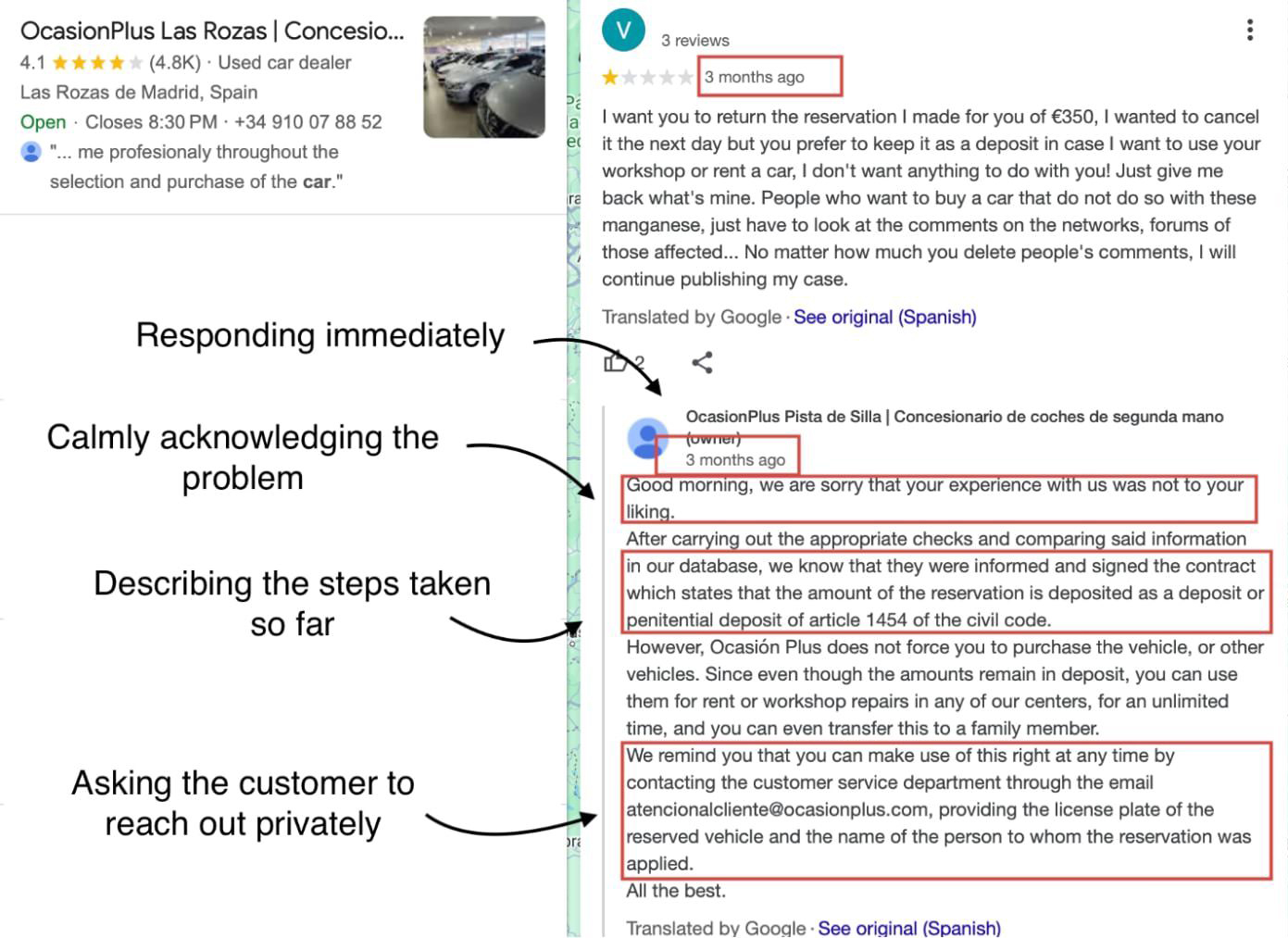
Image source: Google Reviews
As you can see, the dealership responded calmly, not matching the customer’s frustrated tone. They also didn’t deny the problem—they explained what happened, and what steps the dealership has taken to help the customer.
Lastly, they invited the customer to reach out to them again via email so that they could resolve the issue privately and ensure the customer’s concerns were fully addressed.
In the situation above, there clearly was a problem. Unfortunately, you may sometimes get hit with a 1-star review even when there wasn’t an issue at all, let alone one that was your fault.
In such cases, you still have to remain professional and respond with patience and understanding, like here.
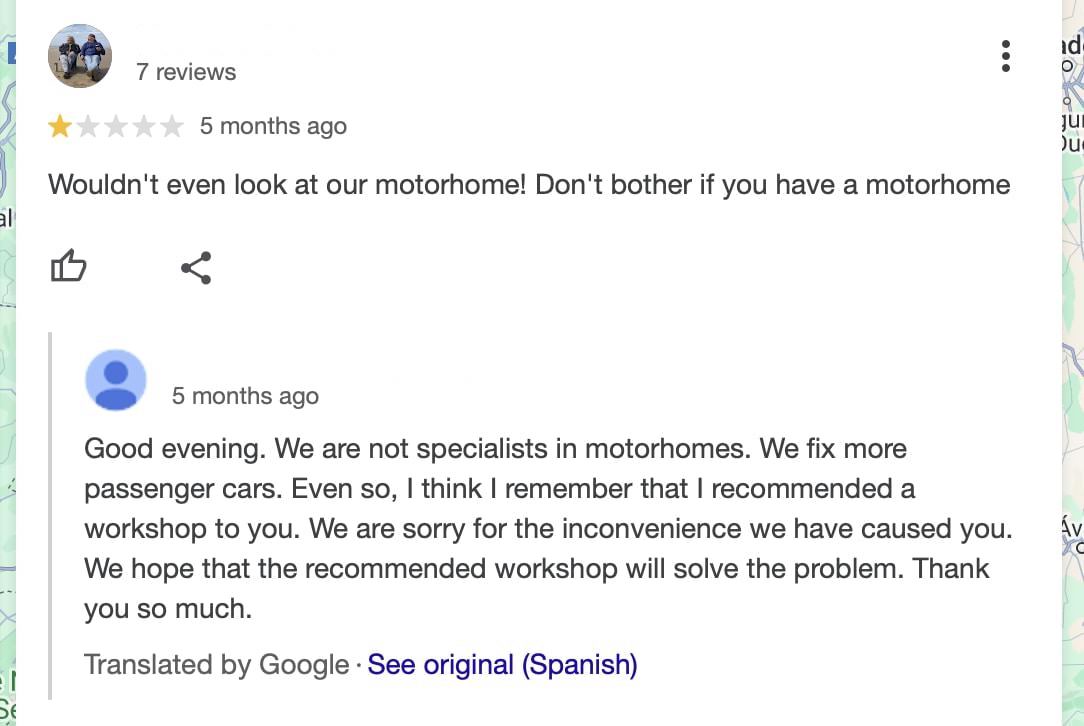
Image source: Google Reviews
The dealership above has replied in time, with a calm approach, and explained how the customer can overcome the issue, even if it has nothing to do with the dealership.
There’s also an apology showing that they care about the experience of all customers.
Basically, even if somebody accuses your used Renault dealership of not servicing their brand-new Tesla, you still have to respond politely and professionally, addressing their concerns and offering any assistance you can.
Examples of wrong responses
Responding to reviews doesn’t come naturally to all dealers—some are better at sourcing cars or handling import documentation. However, it’s important to avoid certain mistakes when replying to customer feedback:
- Getting defensive
- Blaming the customer
- Ignoring the issue
- Using sarcasm
So, even if you’re thinking something along these lines…
“We’re sorry you feel that way, but we did our best. Delays happen, and it’s not our fault you couldn’t pick up your car at another time. Maybe try being a bit more understanding next time.”
…you should definitely resist the urge to hit send. Instead, take a step back and find a friendlier way to address the customer’s concerns.
But, there’s another, subtler mistake that can damage your reputation. It’s using generic, copy/paste responses. Take a look below, and you’ll notice that this dealership pastes the same response to all negative reviews.
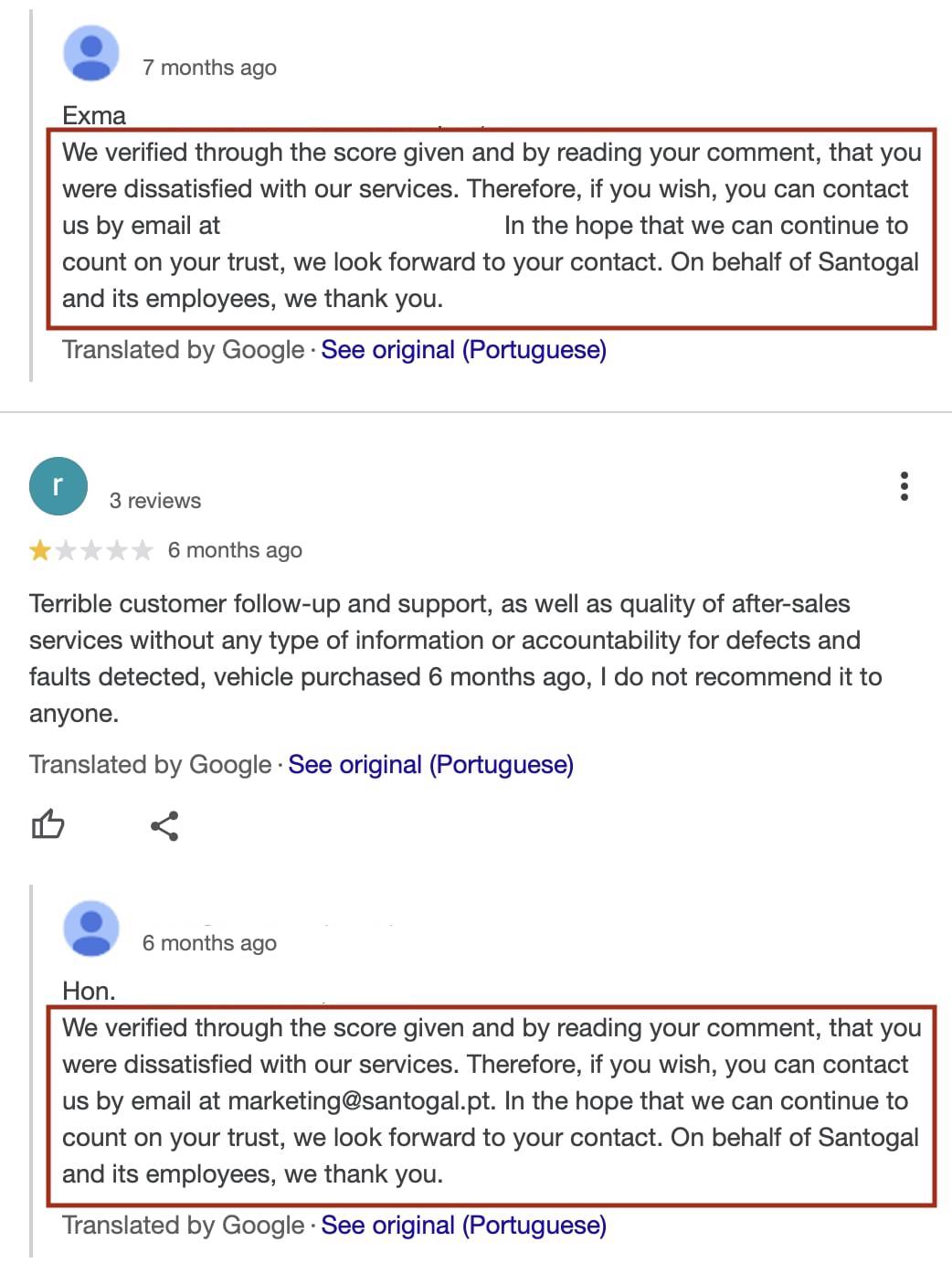
Image source: Google Reviews
This approach is not only lazy, but it also shows customers that they’re not valued as individuals.
So, if you’re aiming to make the most of bad reviews, try to craft your responses so that they target the specific person behind the review.
What are the most common reasons for bad reviews in dealerships?
When you look at used dealership reviews, you’ll notice a few common complaints popping up. To help you respond effectively, we’ve identified those common issues and added some tips on how to handle them.
|
Common complaint |
How to respond |
|
Long wait times |
Acknowledge the delay and reassure the customer that you’re working to speed up the process. |
|
Vehicle condition issues |
Remind the customer of any issues that were clearly pointed out before the purchase and talk about what you can do to help. |
|
Unpleasant staff |
Say sorry for the bad experience and let the customer know you’re working with the team to make sure they get more helpful service next time. |
|
Unexpected costs |
Remind the customer of all the costs and fees that were stated upfront, and offer valid explanations for any additional charges that may have come up. |
Of course, it’s not just about responding to reviews—you should also take the feedback to heart and work on improving.
Turn bad reviews into opportunities
To sum it up, handling bad reviews is a key part of keeping your dealership’s reputation strong. Negative feedback can feel like a hit, but it’s also a chance to show how much you care about your customers.
By staying calm, responding thoughtfully, and addressing each concern with care, you can turn even the harshest reviews into an opportunity to build trust and grow sales.
Remember, each response is a reflection of your dealership, so make it a positive one!
Our extensive inventory includes various makes and models to suit all your needs, sourced directly from reputable European leasing companies, short-term rental companies and dealerships:

